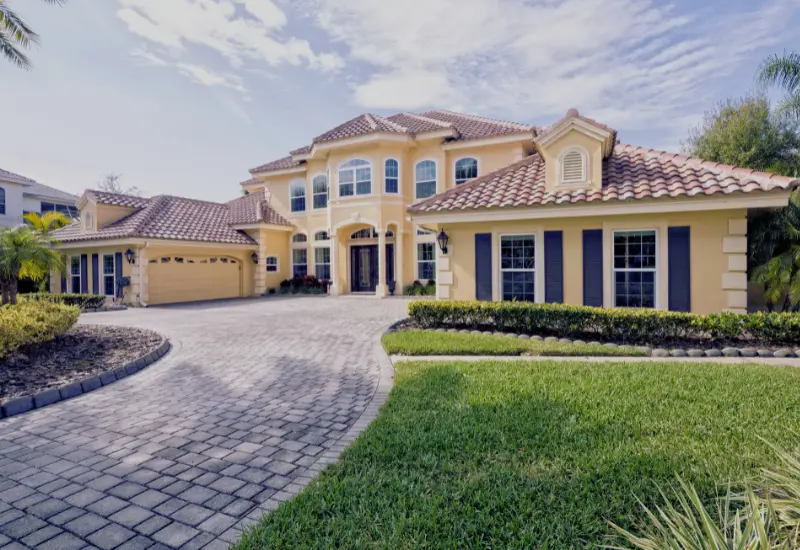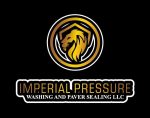
Sealing pavers is a vital step in preserving their beauty and longevity. It shields them from stains, weather, and other environmental factors. But how long does it take for a paver sealer to dry and cure completely? This question often puzzles homeowners eager to protect their investment while ensuring they don’t jump the gun and risk damaging the newly sealed surface.
The drying time after paver sealing can vary significantly based on the type of sealer used. For instance, penetrating sealers dry quickly, typically within 1 to 2 hours, while others may take longer. However, allowing the sealer to cure fully is crucial, which means keeping foot and vehicular traffic off for a bit longer. Understanding these timelines helps maximize the sealer’s effectiveness, ensuring your pavers remain pristine for years. Let’s dive into the factors that influence drying times and offer guidance on when it’s safe to walk or drive on your pavers.
How Long Does Paver Sealer Take to Dry?
Understanding the drying process of paver sealers is crucial for maintaining their quality. Different types of sealers like penetrating and water-based have specific drying times. Penetrating sealers dry in about 1 to 2 hours but require up to 6 hours before they withstand foot traffic. For driving, a 3-day curing period ensures durability.
Water-based sealers, often chosen for their quicker drying, are foot-traffic ready within 24 to 48 hours. Solvent-based sealers take longer, demanding up to 72 hours or more for full curing. Weather conditions like humidity and temperature can influence these times, so always check manufacturer guidelines for precise curing instructions.
Factors Influencing Drying Time
Understanding the drying time for paver sealers helps in planning maintenance effectively. Several variables affect these times, making it crucial to consider them for optimal results.
Weather Conditions
Weather conditions, such as temperature and humidity, directly impact drying time. High temperatures typically accelerate drying by promoting faster evaporation, while colder temperatures slow the process. Humidity also plays a role; higher humidity can extend drying times, whereas dry conditions can decrease them. Checking the weather forecast helps determine the best day for sealing.
Type of Sealer Used
Different sealers, like water-based and solvent-based options, dry at varying rates. Water-based sealers generally dry quicker, often within 24 to 48 hours, because they use water as a carrier, which evaporates faster. Solvent-based sealers can take up to 72 hours or more due to their chemical composition. Understanding the specific sealer type ensures accurate drying expectations.
Application Techniques
Application methods influence drying times significantly. Applying a thin, even coat allows for faster evaporation and drying, while thicker layers can delay the process. Using appropriate brushes or rollers promotes even distribution, reducing pooling that can increase drying time. Following manufacturer instructions on application methods ensures the sealer dries as expected.
Preparing Your Pavers for Sealing
Proper preparation ensures effective sealing and longevity of pavers. Start by cleaning and prepping the surface thoroughly for optimal results.
Cleaning and Prepping the Surface
Begin by removing any existing sealer. Use a chemical stripping agent like FloorStrip HP, which works well with acrylics and both solvent or water-based sealers. Apply it with a pump-up sprayer or mop, let it sit for 3 to 5 minutes, then agitate the surface using a deck brush.
Ensure the pavers are clean, even if they’re new. Products like Techniseal Paver Prep open the pores of pavers, enhancing sealant penetration. For older pavers, it removes efflorescence, the white salt buildup, ensuring a clean surface.
Consider the type of dirt or stains present. Use Surface PrepWork for efflorescence, cement marks, mold, and mildew. It’s acidic and effective in etching and loosening deposits. For oil stains, particularly petroleum-based ones, apply CoverClean HC. Let it sit for at least one hour before pressure washing.
Microbial cleaners, like CoverClean FG for food-based oils, are eco-friendly and don’t harm surrounding animals or vegetation. Lastly, utilize SurfaceClean, a concentrated cleaner and degreaser, after stripping chemicals. Let it sit for 3 to 4 minutes before pressure washing.
A clean and prepped surface enhances sealer adhesion and longevity, preventing any unsightly blemishes or hindered sealing.
Best Practices After Sealing
After sealing pavers, it’s crucial to know when to resume using the surface to ensure long-lasting protection and appearance.
When to Allow Foot Traffic
For foot traffic, it’s safe to walk on the surface once the sealer is dry to the touch. This usually occurs within 1 to 2 hours for penetrating sealers under ideal conditions. However, it’s advisable to wait at least 24 hours after applying water-based sealers and up to 48 hours for solvent-based sealers to ensure full durability.
When to Allow Vehicle Traffic
Vehicles exert more pressure on sealed surfaces, so patience is essential before driving on them. Wait a minimum of 3 days for solvent-based sealers to cure completely before allowing vehicle traffic. In cases of water-based sealers, it’s often safe for cars after 48 hours, though checking specific manufacturer instructions can offer the best guidance.
Potential Issues with Paver Sealer
Using a paver sealer involves considerations beyond just drying times. Poor quality or wrong application can lead to unwanted outcomes, compromising the paver’s appearance and integrity.
Dealing with Slippery Surfaces
Sealers often create a slippery surface, especially solvent-based types. This can pose a safety risk if not addressed. Non-slip additives, available in most paint or hardware stores, usually resolve this issue. Add these to the final coat or apply separately for improved traction. Regular maintenance, such as sweeping and cleaning, also minimizes slipperiness by removing debris and algae buildup.
What If It Rains After Sealing?
Exposing freshly sealed pavers to rain can jeopardize sealer effectiveness. Water can impact bonding and result in blotchy finishes. To mitigate this risk, closely monitor weather forecasts before beginning. Applying sealers when at least 24 hours of dry weather is expected ensures effective curing. If unexpected rain occurs, wait for the surface to dry completely, then assess the need for reapplication to achieve a consistent appearance.
Conclusion
Understanding the drying and curing times of paver sealers is crucial for maintaining the beauty and durability of your outdoor spaces. By choosing the right sealer and adhering to recommended drying times, you can ensure that your pavers remain protected against stains and environmental wear. Remember to consider factors like weather conditions and application techniques that can influence drying rates. Always refer to manufacturer guidelines for the best results. Proper preparation and post-sealing care are key to achieving a long-lasting finish. With these insights, you’re well-equipped to tackle your next paver sealing project with confidence.
